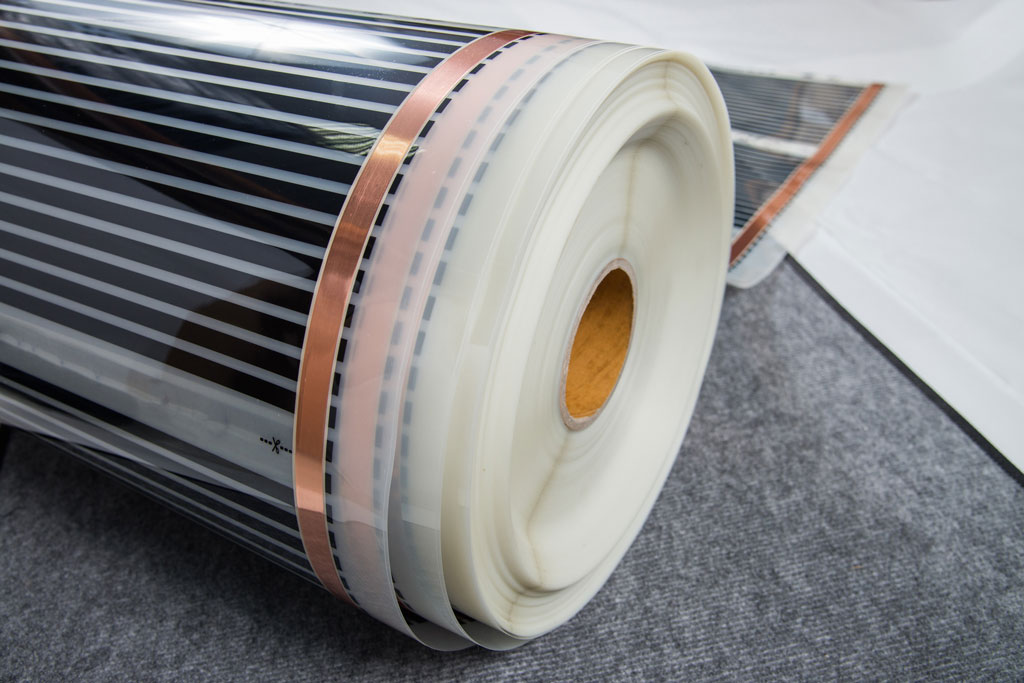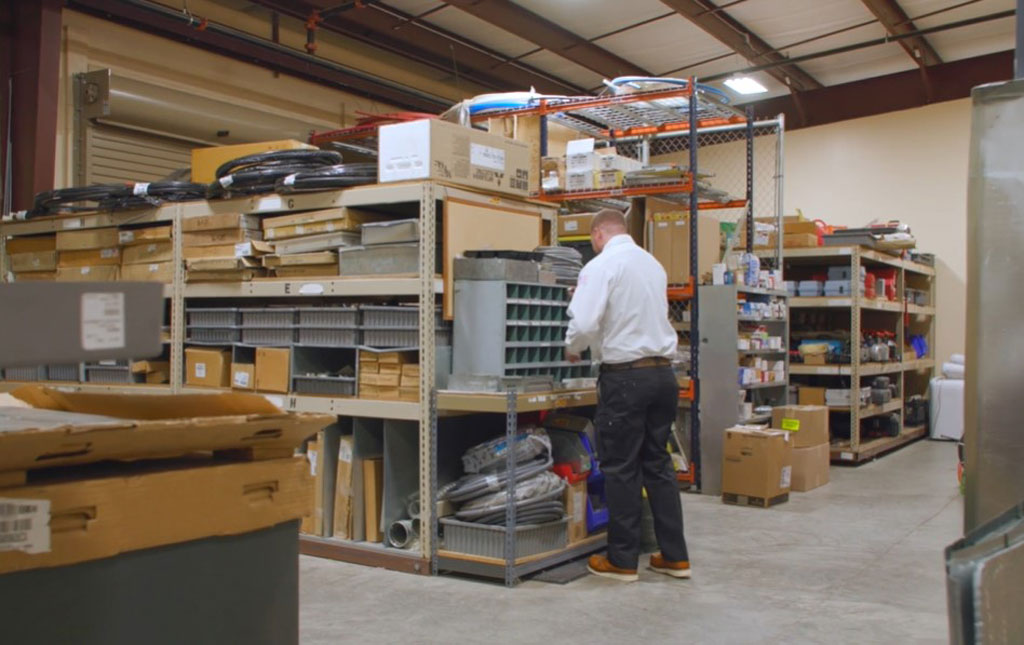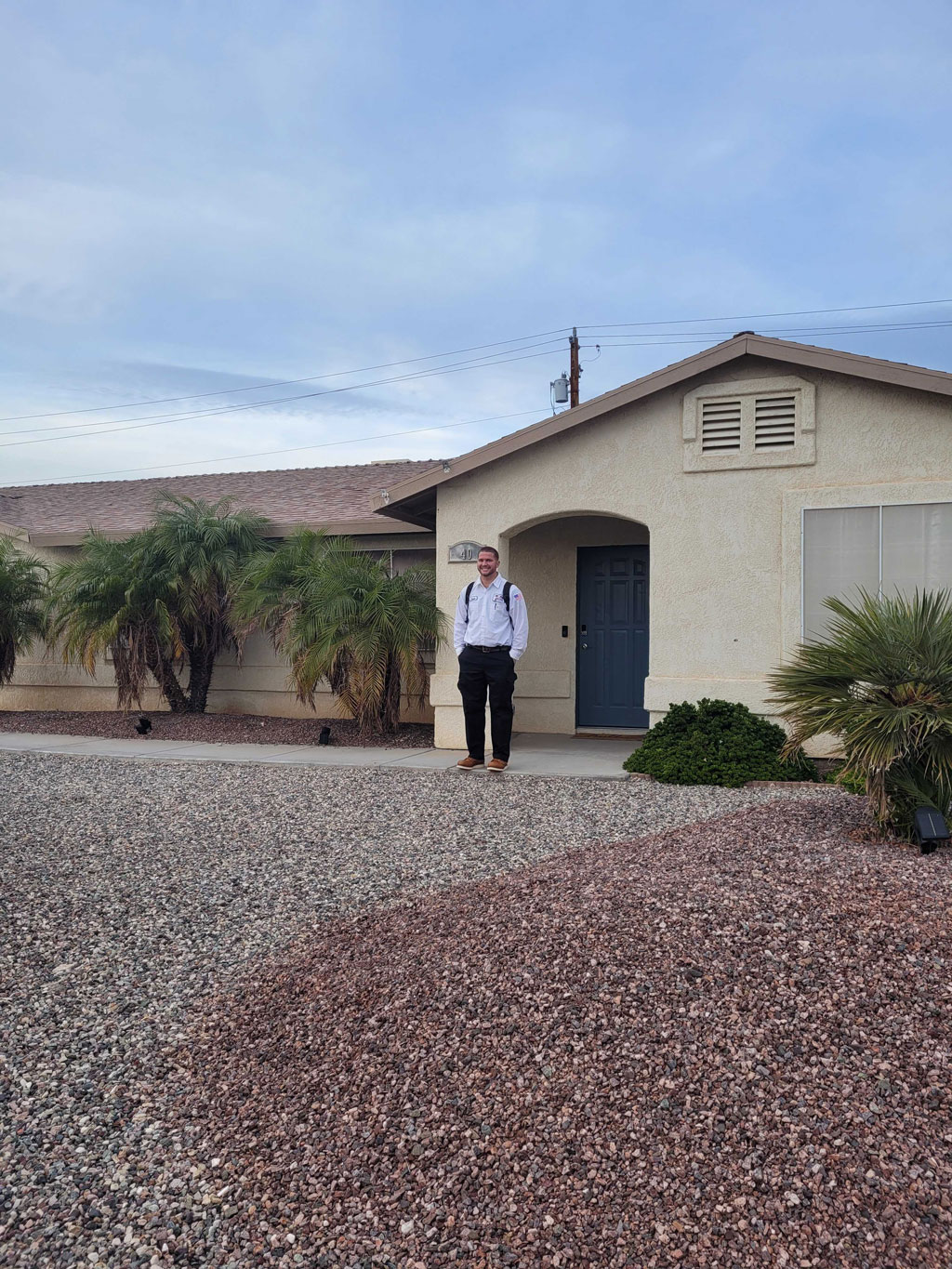
A heating, ventilation, and air conditioning unit is one of the most essential appliances in your home. It helps keep your home cool and comfortable for your family during the scorching summer days. In addition, your HVAC unit contributes to your family’s health by sieving air contaminants such as dirt and dust, thus ensuring there are eradicated from your air supply. However, a skilled AC repair company must install the unit’s piping to enjoy all the services your HVAC system offers. However, it is vital to know all that your aircon piping entails.
What is Aircon Piping?
The air conditioning piping is the tubing that carries the essential components from one part of the HVAC unit. In most cases, your air conditioning piping will usually be made of copper since it is a good conductor and does not react to the materials it carries. However, other materials are available in the market.
Which Are the Types of Aircon Piping?
Your aircon piping is one of the most essential parts of your conditioner. Therefore, unlike most parts of the air conditioning system which only have one part, the piping features two different types or different purposes. For starters, it is essential to note that all cooling systems in a split-type air conditioning unit have refrigerant piping typically made from copper material. Their primary function is to transfer the refrigerant throughout the AC system. This air conditioning piping helps the system perform two significant functions: heating and cooling your home’s air. Therefore, they come in two types; low-pressure and high-pressure. The other type of air conditioning piping in your unit is the water drain pipes. As their name suggests, these pipes carry condensed humidity gathered from your indoor air away from the air conditioning unit to the drains.
Water Pipes
Water pipes is one of the piping types found in most air conditioning system. Water pipes are usually made of plastic or silicon materials. The two materials are rust-resistant, which is handy since the pipes carry water. The materials also are conducive to condensation flow to the drip tray. In addition, water piping in an air conditioning system also transports non-reactive substances around the system. Although water pipes lack a distinctive type or brand, they are available in only two sizes, the 13mm and 16mm diameter pipe. Notably, most water pipes are preferably big since they are more efficient when big. However, this can also cause a lot of damage to the system. Some air conditioning units can use other materials, but most AC repair company technicians prefer copper in AC piping.
Copper Pipes
A split-type air conditioning unit has two major outdoor and indoor units. As the name suggests, an AC repair company installs the outdoor unit outside your home while the indoor unit inside is installed inside your home. Therefore, the technician will use copper pipes to connect these two systems to form one general sir conditioning unit. The copper pipes carry the refrigerant between the two units to effectively cool your home’s temperatures. Therefore, the copper lines are typically divided into two parts. One part is called liquid copper lines, and another is called gas copper lines.
Liquid Copper Lines
The liquid copper lines transport the refrigerant in a liquid state in the cold part of your air conditioning system. In addition, these pipes can also be referred to as high-pressure copper lines since the refrigerant is in high pressure. They transport the refrigerant from the compressor or condenser coils to the evaporator coils in a high-pressure liquid state. The lines are smaller than the copper pipes on the hot side to achieve high pressure. During regular operation of your system, these pipes will feel warm when touched.
Gas Copper lines
Gas copper lines, or low-pressure or suction lines, transport the refrigerant back to the compressor (condenser coils) from the evaporator coils, which are the hot side of your air conditioning system. The refrigerant is in a gaseous state. To achieve and maintain the gaseous state of the refrigerant, the suction line is larger in size and diameter than its counterpart. Therefore, when your air conditioning unit runs, these lines feel cold when touched. The lines are also insulated to reduce condensation and sustain the refrigerant as a gas.
However, copper lines must be installed by a qualified AC repair company for efficient operation. Otherwise, improper installation or insulation of copper piping may cause water build-up in the pipes due to condensation, thus resulting in a leak. Notably, since the refrigerant is at a very low temperature compared to the environment, it is easy for a leak to occur, which negatively impacts the operation of your air conditioning system.
What is An Aircon Piping Lifespan?
The life span of your AC piping depends on factors such as how regularly it is maintained and the elements you expose your pipes to. In addition, factors such as frequency of use and your home’s climate will impact the lifespan of your system. Therefore, to get the best service and longer lifespan from your aircon piping, it is vital that a skilled installation technician installs the pipes and that you schedule a regular maintenance service. But if all these factors are constant, your aircon piping can last between 12 and 15 years.
Can An AC Piping be Reused?
The simple answer is yes. Unlike when reusing your aircon piping was impossible, AC technological advancement and cleaning have made it possible. Therefore, you only need a technician to clean your AC piping before installing the new system. However, reusing your aircon system is highly dependent on the condition of your aircon piping system.
Your aircon piping is the backbone of the efficient operation of your system. Therefore, you want to ensure that a professional installs your aircon piping. Contact us today at Pitzer’s One Hour Air Conditioning & Heating of Mohave County for air conditioner piping services and installation.
See our most recent blog on this topic here.
Check out our reviews here.
Photo By OH
A Comprehensive Guide to Infrared Heaters | AC Repair Company
Is your HVAC system leaving you feeling cold even when it is on? Then you need a different heating system for your home. With the drastic changes in temperature due to climate change, most homeowners are finding it difficult to keep warm and enjoy the tranquility of the cold season. However, whether you are in the market for an add-on heating system or want a new one, finding an energy-efficient and cost-effective one will require research. One of the heating methods to look through is infrared heating. Although it has not been in the market for long compared to other heating systems, it has gained popularity among many homeowners. However, it would help if you considered seeking an AC repair company for your home needs.
What is Infrared Heating?
The first step in knowing if infrared heating is ideal for your home is knowing how it works. Infrared heating is a new technology that produces heat energy by emitting electromagnetic waves. Electromagnetic waves, also knowns as infrared radiation, use the same principle as the sun to generate heat. When radiation comes into contact with a surface or an object, it creates heat. Therefore, unlike traditional heating methods that heat the air, infrared heating directly heats the thing. The result of this type of heating is an efficient heating process that has no heat loss. Consequently, infrared heating is cost-efficient and more comfortable than traditional heating methods.
How Does Infrared Heating Work?
An infrared heater works by using electromagnetic energy to heat a surface. Electromagnetic waves travel in the air and heat a surface or object when it comes in contact with it. Unlike convection heating, where the heater heats your entire air, infrared heating heats the targeted object or person directing. Consequently, infrared heating has lower heat loss, leading to a more efficient heating process with lower energy costs and more comfortable space.
Is Infrared Heating Safe?
Now that you know the method and how it works, the next step in determining whether it will work for your home is knowing its risks and benefits.
The Risks of Infrared Heating
While this method has many benefits for you as a homeowner, there are some potential risks you should consider before having an AC repair company install it in your home. These risks include;
Electromagnetic Radiation
The most common concern with most homeowners about infrared heating is the potential for electromagnetic radiation. Electromagnetic radiation is a type of radiation produced by most home appliances, such as electronic devices. However, since it is very obvious in infrared heating, most homeowners are worried about the levels these heaters emit. Infrared heating systems emit very low levels of electromagnetic radiation within safe limits. Most infrared heating systems release less electromagnetic radiation than common household appliances such as computers and televisions.
Other Health Concerns.
The other significant risk most people worry about regarding infrared heating is other health risks associated with these heaters, such as respiratory problems and dry skin. Although some of these risks are possible, they can be easily addressed by avoiding prolonged exposure to the heat or having a heating and AC repair company incorporate a humidifier in your home.
Fire Safety
One of the most asked questions about infrared heating risk is its affinity to fire. While any heater, including traditional heaters, poses a fire risk, infrared heaters generally pose a lower fire risk than other heating systems. Therefore, infrared heating is safer than other methods in the market. However, when choosing an infrared heater, buy a reliable, reputable manufacturer and have a qualified technician help you through installation. The technician will follow all the manufacturer’s safety guidelines and instructions. Therefore, you will be sure your system is up to standard and minimize the fire risk in your home.
Maintenance and Repairs
Repair and maintenance are services that an infrared heating system will need for efficient operation. Therefore, consider these costs when deciding whether to invest in this heating system. Additionally, when buying an infrared heater, you should look for the system warranty to ensure it is insured. Also, choose a reliable and reputable manufacturer with good customer care support and after-sale services, such as delivering the system to your home.
Benefits of Infrared Heating
Infrared heating offers your home various benefits, such as increased energy efficiency, improved air quality, and a comfortable living environment.
Energy Efficiency
Infrared heating is a very energy-efficient method. Since this method heats the object directly, the radiation energy converts to heat once it comes to contact with the object. Therefore, it has minimal heat loss, leading to lower electrical bills. Studies indicate that infrared heaters reduce energy costs by up to sixty percent compared to other heating methods.
Comfortable Living Environment
Unlike traditional heating methods that recirculate your home air, allowing dust, dirt, and other particles into your breathing air, infrared heating directly heats the intended surface. Therefore, there is the possibility of pollutants getting into your breathing air. In addition, an infrared heater distributes heat evenly throughout your home, facilitating a comfortable environment. Notably, infrared radiation can go through objects in your home, thus heating your home evenly.
Improved Air Quality
The other significant benefit of choosing infrared heating is that it can improve your home’s air quality. Unlike traditional heating systems, infrared heaters can reduce the number of air pollutants such as dirt, dust, and allergens in your indoor air. This is because infrared heating relies on heating objects directly rather than heating the air and using convection currents to distribute it. However, an AC repair company should install an infrared heater for you to enjoy improved air quality.
Is Infrared Heating Suitable?
Infrared heating is very efficient and cost-effective. However, factors such as your room size must be considered to enjoy all its benefits. Therefore, to satisfactorily answer this question, contact us at Pitzer’s One Hour Air Conditioning & Heating of Mohave County for consultation services.
See our most recent blog on this topic here.
Photo By cash14 at iStock
Why Perform a Heating and Cooling Energy Efficiency Audit | AC Repair Company
Your home isn’t comfortable, maybe too cold during winter or hot in summer. Or perhaps the energy costs have been rising recently, and you know it does not make sense to keep paying higher bills to keep your home comfortable. You know already that you need air sealing and insulation upgrades. You already have convinced yourself that you know where the problem lies and where you need to work. So, there is no need to waste time conducting an energy audit on your HVAC system when you have pinpointed the root cause of the problem that both you and your family members may be suffering from. The best thing you can do as a homeowner to schedule an HVAC upgrade with an AC repair company is to have the technicians also conduct an energy audit of your home.
Health and Safety Benefits
What is the nexus between heating and cooling energy audits and home safety and health? Energy audits also feature a “whole home assessment, ” including a home safety inspection. But why combine the safety and energy efficiency audit? When a furnace or an HVAC system has a heat exchanger or burner problem, that could result in incomplete combustion. When this happens, carbon monoxide is produced. This is a colorless, odorless, and tasteless toxic gas. Incomplete combustion means more energy is used when the unit compensates for the lost one.
Since issues such as combustion emissions and high carbon monoxide levels can threaten you and other family members, combining audits and safety makes sense. High carbon monoxide levels will result in drowsiness, discomfort, and frequent illnesses. At worse, inhalation of carbon monoxide can be fatal. When the AC repair company diagnoses the issue resulting in incomplete combustion, they will address it, preventing excessive energy use and leaving your home safe.
Clogged filters, dirty air ducts, and frozen evaporator coils indirectly impact indoor air quality and increase energy use. When the contaminant levels increase in the indoor air, your family might start contracting respiratory-related issues. Frozen air conditioner coils will grow mold, further impacting indoor air quality. When the AC repair company sends a technician to conduct a heating and cooling energy audit, they also might clean the ducts and change the filters to ensure that the air you breathe is safe.
Uncover Any Hidden Problems
An energy audit is among the best ways to uncover the performance issues plaguing your HVAC system for years. For instance, air leaks around the windows, attic penetrations, and doors may cost you money and make your home highly uncomfortable, regardless of the time of the year. It can be said the same for home performance and insulation in your walls or attic. Just because you cannot see a problem doesn’t mean it isn’t there. The heating and cooling energy audit team from your reliable AC repair company can diagnose the underlying issues and advise you on the best action.
Consistent Levels of Indoor Comfort
A home energy audit from the technical team of your reliable AC repair company is not just several laps in your home with a clipboard. They will conduct a comprehensive or thorough audit that covers your entire home. Homes can prove tricky with so much insulation (or its lack thereof ) hidden behind the walls and other hard-to-reach areas; hence, although the issue with your home may be concentrated in a single space, that might not be the case. Unfortunately, you might only know you have such an issue if you have an energy audit of your home.
It Makes Your Heating and Cooling System More Energy Efficient
When the technicians from your reliable heating and AC repair company come for an energy audit, they can help you better protect your home from the unwanted air and heat moving out and in. If your home does not offer sufficient protection from the outdoor elements, your cooling and heating system might have to work harder to compensate. By insulating and air sealing your home, you will reduce the workload on your heating and AC unit, further extending the service life of your unit with no compromise on your comfort.
Lowers the Monthly Cooling and Heating Bills
You save money whenever your heating and air conditioning system is more energy efficient. Whether air conditioning bills at mid-summer or a furnace running over the entire winter, an energy audit may identify where energy is being wasted in your home. The energy audit results show that the AC repair company can adequately insulate and air seal your home and ducts. Hence, you will pay less in energy utility bills.
Improves the Indoor Air Quality
Gaps and cracks in your foundation can allow indoor pollutants into the indoor space. This is remembering that moisture can result in mold growth. Air sealing and upgrading your insulation after the AC repair company does an energy audit of your home can help make your indoor air cleaner and healthier while reducing the health issues associated with unhealthy air.
Increase the Resale Value Your Home
Investing in an energy efficiency audit and doing the required follow-up upgrades means that when you finally list your home for sale, you can tell the prospective buyers, “My home is energy efficient.” You can stay comfortable throughout the year and never worry about higher energy utility bills. Hence, talk with your AC repair company and have them conduct an energy efficiency assessment of your home.
When Did You Last Have A Home Energy Efficiency Audit?
Can you recall when a professional last audited your home’s energy efficiency? If you cannot, not is the time. Contact us at Pitzer’s One Hour Air Conditioning & Heating of Mohave County to book an appointment for a heating and cooling energy efficiency audit.
See our most recent blog on this topic here.
Photo By OH
Top Ways to Solve Uneven Home Cooling by AC Repair Company
Temperature control is an essential aspect of any home. As a homeowner, you want the freedom to adjust your home’s temperature to your desired level, whether on a cold night or a warm summer. Therefore, to achieve it, you consult an AC repair company on the best and most compatible HVAC system with your house and have it installed in your home. So, why is it that you still cannot get to control the temperatures? Why does your home have uneven cooling, especially between the two floors? When investing in an HVAC, most homeowners expect the system to give them a cool and temperature-balanced home throughout their lifespan. Unfortunately, this is only sometimes the case, especially in multi-storied homes. After some time, they experience uneven home cooling, which interferes with their home’s comfort and ability to cool certain rooms.
Have Your Air Vents Cleaned
The main purpose of the air vents in your HVAC system is to carry the air between the indoors and outdoors of your home. However, dust and dirt particles can accumulate over time in the air vents, restricting the airflow to some rooms. If your vents are dirty, this could be why certain areas of your home are not attaining your desired temperature. Therefore, you should contact an AC repair company to clean your vents.
In contrast, your vent might not be circulating air to your room because it is blocked by either furniture or carpet or the vent cover is closed. Therefore, when you notice a temperature imbalance, move through each room of your home and ensure all the vents are open and unobstructed.
Adjust Your Fan Settings from Auto to On
When you notice a temperature imbalance in your home, the other thing you should look at is the thermostat. If its setting is auto, you should switch it on. When your fan is on, it keeps circulating air even after your system cooling cycle is off. Therefore, it acts as a helper to your system since it continues to circulate the air even in uncooled rooms.
However, when your HVAC fan is on the auto setting, it will only run when cooling is needed. Although the auto setting is good for conserving electricity, running the fan more will help even out your home’s temperature. Therefore, you should remember that running your fan continuously will add to your energy usage and monthly electrical bill.
Have Your Air Ducts Checked and Sealed for Air Leaks.
The other major cause of temperature imbalance in most homes is leaking ducts. The ducts in your HVAC system carry hot air from your home to the HVAC system to be cooled and filtered. When the air is cooled, it goes back through the air ducts to the spaces throughout your home. However, when there is a gap or opening in the duct system, the cooled air leaks out of the ductwork before reaching the desired room. Therefore, your air conditioning system has to work harder to attain the required temperature. As the system works overtime to try and keep up with the requirements of your home, this affects its efficiency.
In addition, due to the reduced efficiency, your HVAC system will use more energy, leading to escalated electricity bills. Therefore, you should immediately contact an AC repair company to inspect your system when you suspect your ductwork leaks. The professional will check and seal the ductwork to restore your HVAC system to normal functionality. This should improve the temperature balance in your home.
Add Insulation to Your Attic
Another major contributor to temperature imbalance in most homes is low attic insulation. The insulation in your home’s attic helps isolate indoor and outdoor temperatures. As a result, your HVAC system can heat or cool your home according to your needs. Therefore, if your attic lacks enough insulation, the cool air generated will always find a way to escape to the surrounding environment, thus leaving some rooms cooler than others. Since your home cannot contain the temperature within its walls, the system overworks to meet your home’s temperature requirements.
As your HVAC system overworks to keep up with the temperature requirement, it draws more energy leading to high electrical bills. Situations, where cool air escapes your home and hot air from the environment finds its way in can create a noticeable temperature imbalance between the two levels of your home. Therefore, to avoid this, ensure adequate insulation in your attic.
Have a Zoning System Installed
Although this is a more intensive investment option that might require you to plan, it is the most effective in dealing with temperature imbalances in your home, especially if it is a multi-story building. A zoning system divides your home into several sectors, each with a dedicated thermostat for temperature control. In addition, this system utilizes several dampers to help the dedicated thermostats control the temperature.
Dampers are plates connected to your HVAC system to control the airflow in your home’s ducts. In most cases, the AC repair company will check your home’s duct system before the installation to find the dampers which can match your system. The dampers will open or close depending on the temperature needs of their attached zone. Therefore, if a zone needs more air circulation, the damper will open to allow airflow to the region. When the zone attains the required temperature, the damper will close to restrict airflow. With a zoning system, you can control each section of your house separately to make it as warm or cool as you like without interrupting the temperature settings of the other zones.
The comfort of your home is supported by all the systems you surround yourself with. As such, these systems should give you the ambiance to enjoy your time with your family. Contact us at Pitzer’s One Hour Air Conditioning & Heating of Mohave County for more information and services on home cooling.
See our most recent blog on this topic here.
Photo By OH
Geothermal Vs. Natural Gas Heating Cost by An AC Repair Expert
Your home’s heating system is the backbone of the comfort of your house, especially during the cold winter season. On that cold night in the middle of winter, you want to be assured that your heating system will not leave you stranded. Therefore, choosing an efficient and reliable system is the first step to achieving comfort. In addition, you need to ensure that your ideal heating system is cost-effective. While most homeowners prefer furnaces as their go-to heating source, other options, such as a geothermal heat pump, offer better advantages than the traditional furnace. For example, while the traditional furnace only heats your home, a geothermal heat pump will also be a cooling unit during summer. Therefore, before committing to a specific heating system, do your due diligence and compare all options. A professional AC repair technician will help you navigate the market and offer an informed opinion on what is best for your home. Below is an ultimate guide on geothermal vs. natural gas heating systems to help you choose the ideal system for your home.
Which is More Efficient, Between Natural Gas or Geothermal Heating?
Before diving into what these heating systems can offer you, it is advisable to understand their efficiency and cost implications first. Notably, the overall cost of a heating system is significantly determined by its efficiency. In addition, knowing the cost of each fuel type goes a long way in deciding which heating system will best serve your home.
What fuels the Geothermal and Natural Gas heating Systems?
Although geothermal heating takes heat from the earth, electricity typically powers it. On the other hand, as the name suggests, natural gas heating systems are fueled by natural gas. Since natural gas is cheaper than electricity, the natural gas furnace would be more affordable if this was the only factor to consider. However, this is only partially applicable since other factors are at play. Notably, although the geothermal heat pump is fueled by electricity, its operation differs. Hence it is advisable to consult an expert if the geothermal heat pump is compatible with your home.
Efficiency Comparison Between a Geothermal and a Natural Gas Heating System
The geothermal system heating costs largely depend on the coefficient of the system’s performance. The coefficient of performance, referred to as the COP by most AC repair technicians, is a ratio of the amount of heat a system will provide for a specific amount of energy. Therefore, a heating or cooling system with a high COF is efficient and cost-effective. A geothermal heating system has a COP of up to 400% efficiency for every dollar of electricity used. Therefore, geothermal heating is three times more efficient than other heating systems.
The Annual Fuel Utilization Efficiency (AFUE) ratio measures the efficiency of combustion-based units such as the natural gas heating system. Like the COP ratio, the AFUE ratio measures how much heat a system will provide for a specified amount of energy. A natural gas furnace has between 80% and 98% efficiency, whereas an electric furnace can go up to 100% efficiency. Therefore, the geothermal heating system will be more cost-efficient to operate when compared to a natural gas heating system.
Heating Cost Comparison Between Natural Gas Vs. Geothermal Heating
When debating between natural gas and geothermal heating systems, you should consider two main costs; the operational cost of the system and the initial cost. However, when reviewing the system’s initial cost, it is crucial to factor in the AC repair technician’s fee and the installation cost.
Factors Affecting the Installation of a New Heating System
Sustainability
Before deciding between geothermal and natural gas heating systems, it is important to consider the sustainability of the system you choose for your home. Due to the impact of global warming, most people and companies are advocating for a clean energy system to reduce carbon imprint output and promote a more sustainable future. Consequently, the geothermal heating system has been favored by these new policies. Thus, as the population shifts towards renewable energy systems, the usage of natural gas heating systems decreases. As a result, many gas mining companies will gradually stop mining, resulting in the skyrocketing of natural gas prices due to laws of demand and supply. Therefore, with this in mind, the ideal heating system option for your home is the geothermal heat pump.
Cost of Installation
A geothermal heating system’s market price is higher than that of a natural gas heating system. Therefore, the natural gas furnace is your best choice if you are on a tight budget.
Functionality
When looking for a heating system, you need one that is functional in all four weather seasons. Therefore, you should consider one with heating and cooling capabilities to avoid investing in another system to cool your home. Unfortunately, the natural gas furnace only has a heating feature. Therefore, choosing it as your home’s heating system would mean having an AC repair professional install a separate AC unit. On the other hand, you can use a geothermal heat pump as a heat source and a cooling unit, saving from installing an AC unit.
Federal Tax Credits
Federal tax credits are another factor to consider before settling for a specific heating system. A geothermal heating system will offer you up to 26% federal tax credit on your total heating cost as a homeowner. However, these rebate programs have regulations to attain before you are eligible.
The most important factor when choosing a heating system is getting an ideal one for your home. Therefore, take your time and go through all the factors before settling on one. In addition, a professional technician’s help goes a long way in deciding the heating system that suits your home best. Contact us at Pitzer’s One Hour Air Conditioning & Heating of Mohave County if you need heating system installation services or in choosing your next heating system.
See our most recent blog on this topic here.
Photo By Hiranmay Baidya at iStock
Check out this tip!










